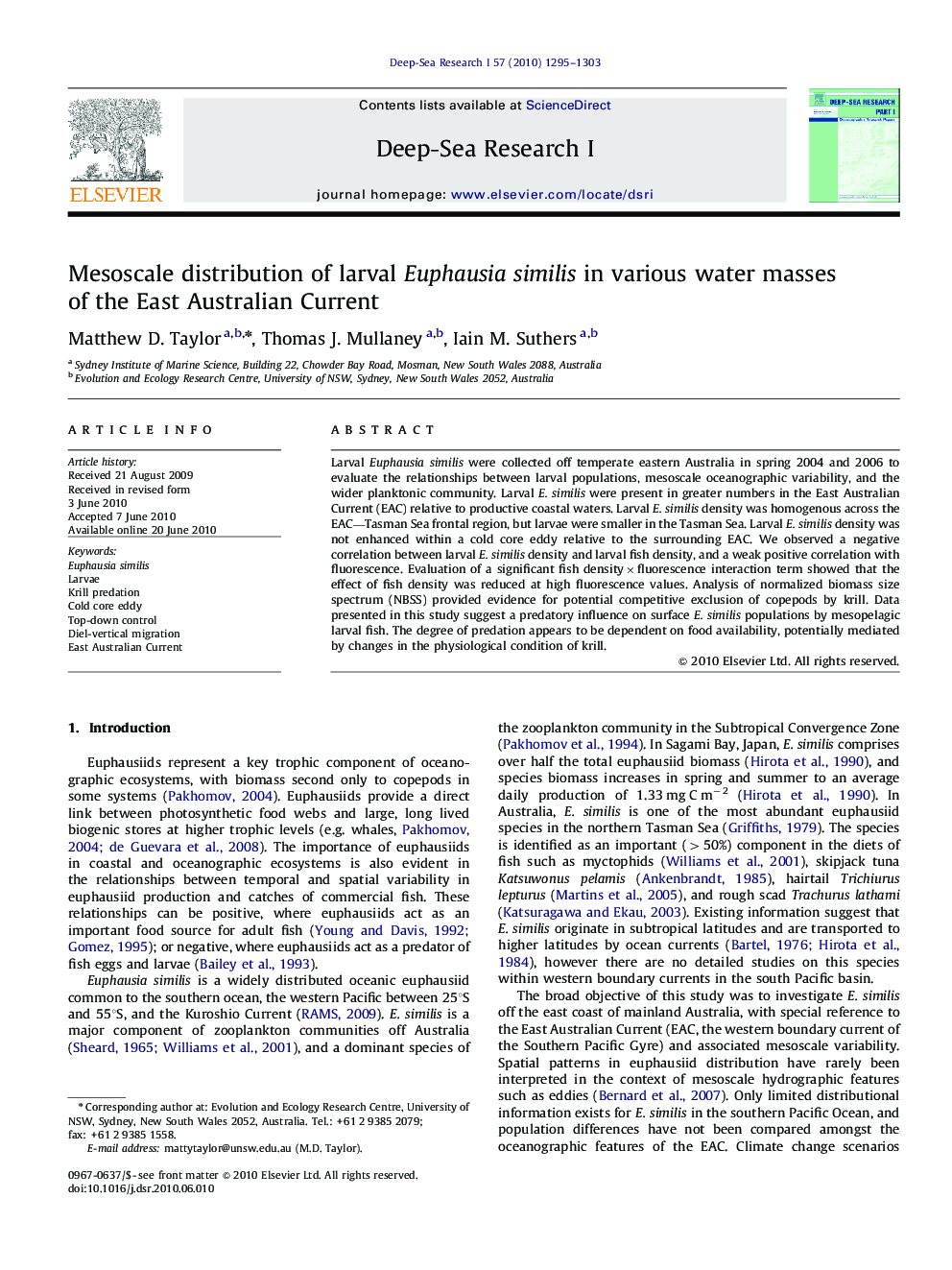| Article ID | Journal | Published Year | Pages | File Type |
|---|---|---|---|---|
| 4535285 | Deep Sea Research Part I: Oceanographic Research Papers | 2010 | 9 Pages |
Larval Euphausia similis were collected off temperate eastern Australia in spring 2004 and 2006 to evaluate the relationships between larval populations, mesoscale oceanographic variability, and the wider planktonic community. Larval E. similis were present in greater numbers in the East Australian Current (EAC) relative to productive coastal waters. Larval E. similis density was homogenous across the EAC—Tasman Sea frontal region, but larvae were smaller in the Tasman Sea. Larval E. similis density was not enhanced within a cold core eddy relative to the surrounding EAC. We observed a negative correlation between larval E. similis density and larval fish density, and a weak positive correlation with fluorescence. Evaluation of a significant fish density×fluorescence interaction term showed that the effect of fish density was reduced at high fluorescence values. Analysis of normalized biomass size spectrum (NBSS) provided evidence for potential competitive exclusion of copepods by krill. Data presented in this study suggest a predatory influence on surface E. similis populations by mesopelagic larval fish. The degree of predation appears to be dependent on food availability, potentially mediated by changes in the physiological condition of krill.
